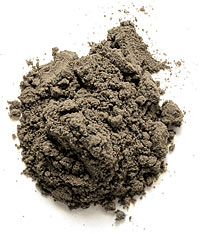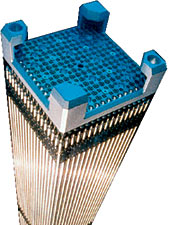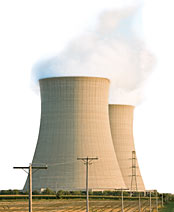On the campaign stump, President-elect Barack Obama made a sweeping call for a nuclear-weapons-free world. But where would the nuclear material from the old warheads go? One possibility: into the electricity that lights your home.
There’s precedent. On average, every tenth light bulb in the United States is powered by uranium that was once used in a Russian nuclear warhead, thanks to the “Megatons to Megawatts Program,” a post–cold war U.S.-Russian initiative to safely destroy outdated Soviet nuclear warheads. That average is higher in Illinois, where nuclear power generates nearly half of the state’s electricity.
We shine a little light on the way we get our light (or toast our bread):

1. The nuclear component of a nuclear warhead—highly enriched uranium, or HEU—resides in Russian warheads in metal form. Once a warhead is removed from a missile and its HEU is isolated, a lathe turns the HEU from a hunk of metal into curlicue shavings about as thick as a fingernail.

2. Intense heat transforms the shavings into a powder (think of a rough salt), and it’s ready for downblending—the gaseous process in which the HEU is made suitably safe for U.S. nuclear power plants. As such, it receives a new name that better reflects its altered composition: low-enriched uranium, or LEU.

3. Packaged in a steel cylinder, the LEU is sent via train to St. Petersburg, Russia, where the United States officially takes ownership of it and ships it to Paducah, Kentucky.

4. From there, the LEU goes to a third-party fuel fabricator chosen by the utility (in our case, Exelon), who fashions it into a collection of small pellets that are stacked in long metal rods and arranged in a ten- by ten-foot matrix called a fuel assembly.

5. And voilà! There can be light—the assemblies loaded into the cores of Exelon’s 11 Illinois nuclear reactors, where they spend the next four to six years generating electricity.
photography: (missile) qingwa/istockphoto.com, (st. petersburg church) onfilm/istockphoto.com, (fuel assembly) usec, (byron power plant) allkindza/istockphoto.com



